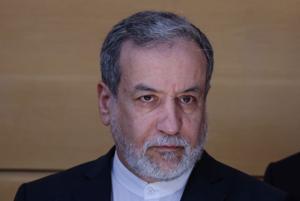The U.S. airstrike on Iran’s Fordow nuclear facility has resulted in “serious and heavy damage,” according to Iranian Foreign Minister Abbas Araqchi in an interview with CBS News. The attack, which took place earlier this week, has escalated tensions between the two nations, raising concerns over regional stability and nuclear proliferation.
Fordow, a key site in Iran’s nuclear program, has been at the center of international scrutiny due to its role in uranium enrichment. The facility, located deep underground near the city of Qom, is considered one of Iran’s most fortified nuclear sites, making the extent of the damage particularly significant.
Background on Fordow and Its Strategic Importance
The Fordow Fuel Enrichment Plant was constructed in secrecy and revealed to the world in 2009, sparking global concern. It is designed to enrich uranium, which can be used for both civilian energy purposes and, potentially, nuclear weapons. The site has been a focal point in negotiations and agreements aimed at curbing Iran’s nuclear capabilities.
The 2015 Joint Comprehensive Plan of Action (JCPOA), commonly known as the Iran nuclear deal, saw Iran agreeing to limit its nuclear activities in exchange for the lifting of economic sanctions. However, the U.S. withdrawal from the agreement in 2018 under the Trump administration led to increased tensions and a resumption of some nuclear activities by Iran.
International Reactions and Implications
The recent airstrike has drawn varied reactions from the international community. While some Western allies of the U.S. have expressed support, others have called for restraint and dialogue. The European Union, in particular, has urged both nations to return to the negotiating table to prevent further escalation.
Experts warn that the damage to Fordow could have significant implications for the region’s security dynamics. Dr. Emily Landon, a nuclear proliferation expert, stated, “This attack not only impacts Iran’s nuclear capabilities but also sets a dangerous precedent for military interventions in nuclear facilities.”
“The risk of a broader conflict is now higher than ever, and the international community must act swiftly to de-escalate tensions,” said Dr. Landon.
Historical Parallels and Future Prospects
This development follows a history of confrontations between the U.S. and Iran over nuclear issues. Similar incidents in the past, such as the Stuxnet cyberattack on Iran’s Natanz facility, highlight the ongoing struggle over nuclear technology and its potential military applications.
Looking forward, analysts suggest that this incident could either serve as a catalyst for renewed diplomatic efforts or further entrench the current impasse. The Biden administration, which has expressed interest in rejoining the JCPOA, faces a complex challenge in balancing pressure and diplomacy.
Meanwhile, Iran’s response to the attack remains to be fully seen. The nation has vowed to continue its nuclear program, asserting its right to peaceful nuclear energy. However, the extent of the damage at Fordow might hinder its immediate capabilities.
Conclusion: A Call for Diplomacy
The situation at Fordow underscores the fragile nature of nuclear diplomacy and the potential for conflict in the Middle East. As both nations navigate this critical juncture, the international community’s role in facilitating dialogue and preventing further escalation is more crucial than ever.
The next steps will likely involve intense diplomatic negotiations, with the hope of reaching a sustainable resolution that addresses the concerns of all parties involved. The world watches closely as the implications of this airstrike unfold, seeking a path toward peace and stability.
